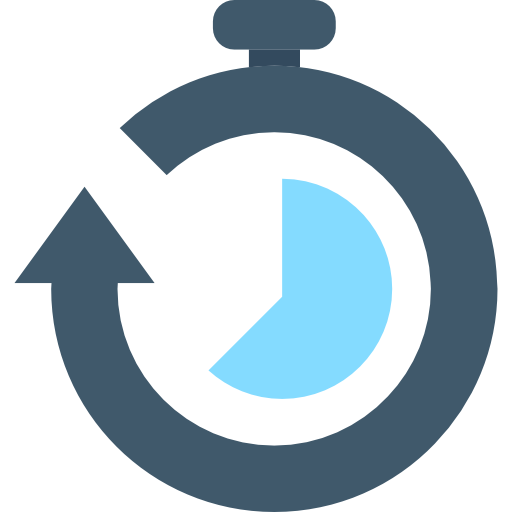Drive organic traffic
SEO – Search Engine Optimization
Helping your business become more visible in search engines, generating more traffic and higher quality leads.

Generate more organic traffic to your website.
SEO, which is the acronym for Search Engine Optimization, helps your website show up in search engines when a potential customer searches for something related to your business. SEO targets what are known as intent-based customers, which are customers who already have the intention to purchase a product or service. These customers already know what they want, they’re just looking for the best provider to give it to them. By ranking highly in search engines through our SEO services, you become a go-to provider for these customers. This drastically increases not only the number of leads you get, but the quality of those leads.
The 3 pillars of our SEO campaigns.
Technical optimizations
optimizing the code of your website
A website’s core structure is all about making sure search engines can crawl and index all of your content and in the right way. This means having clean HTML code, properly structured URLs (with no parameters, if at all possible), the right HTTP status codes for the right kind of webpages (so a Not Found page results in a 404 code, not a 200 or 302, and a 301 to redirect those pages when necessary), proper XML sitemaps, etc.
Essentially, this is everything that goes on under the hood of your website. It’s what makes your website function. Optimizing the structure ensures search engines can find and easily see the data of your website. It also helps make your website load faster and results in a better user experience.
Proper technical optimizations can also result in your website showing as a “Featured Snippet” or with “Rich Snippets” in Google. A Featured Snippet is like a super upgraded organic listing that stands out against the rest, containing a text blurb, image, and link to the page. A Rich Snippet is inbetweena basic organic listing and a Featured Snippet, usually showing additional content like extra site links or reviews.


On-page optimizations
optimizing the content of your website
When search engines can crawl your site’s content, that doesn’t mean they know what your content is about. The content optimization aspect of SEO looks at the various elements of text, images, videos, and links to ensure it can be properly interpreted by search engines.
This means having optimized headlines and header structures, properly structured content, sufficient topical focus on a single page, including the right semantic signals, etc. Writing great SEO-friendly content is now more important than ever.
Authority building
increasing the trustworthiness of your website
Great content alone is not enough to rank well in search results. You need to be seen as a trusted source, which is where the authority aspect comes in. With sufficient links from other trusted websites, your site will be seen as trustworthy as well and search engines will rank your content higher in search results for relevant queries.
It’s not enough to be on the first page of Google. You need to rank #1. Your website authority can be the difference between ranking #3 vs #1. The difference between #3 and #1 is staggering. The #1 ranked website on average will get 400% more traffic than the #3 website, and 200% more traffic than the #2 website.


SEO case study
$500,000 in potential leads in 12 months
See how our SEO campaign drove nearly 900 potential clients to this men’s health clinic in 12 months, totaling in nearly half a million dollars worth of potential leads.
Our SEO campaigns implement a time-tested and proven 10 step SEO process
See exactly what we do during an SEO campaign that gets you to outrank your competitors in search engines. Our SEO process is industry leading and proven to work. Stop paying companies for leads and start generating them for yourself on your own website.
Step 0: Website design
laying down the foundation


Step 1: Onboarding
getting to know your business
Step 2: Competitor research
investigating your competition


Step 3: Keyword research
what are people actually searching for
Step 4: Website sitemap
creating a content silo


Step 5: Technical website audit
finding and fixing technical errors
The fifth SEO step is where the research ends and the action begins. Now that we know everything we can about your business, your competitors, the keywords we want to rank for, and the new website structure, it’s time to dive into your website.
We run a full technical audit on your website to find any technical issues that may have been hindering your search engine performance. Our technical audit checks your website for more than 100 different items, including title tags, meta descriptions, and broken internal links to name a few.
Once we run the technical audit and understand the technical issues of your website we begin correcting those issues. This can take anywhere from a few hours to a few weeks or more depending on the size of your website.
Step 6: On-page optimization
optimizing the content of your website
Once your website’s technical issues have been resolved we can move on to step six in our SEO process: on-page optimization. Depending on the size of the website we may begin the on-page optimizations while still working on the technical fixes and optimization.
We’ll begin optimizing the pages of your website, including restructuring the text, adding appropriate heading tags, ensuring images have alt attributes, and much more. The length of this process again depends on the size of your website and the number of keywords we are targeting.
Then we implement our new content silo. We focus on a single keyword per page to maximize the performance of that keyword. We then create content around those single keywords that is optimized for search engines. This includes structured text and some multimedia like images and videos.


Step 7: Analytics integration
gathering the data
Now that the website is clear of all technical issues and we’ve completed the first set of optimizations, we then integrate the analytics channels in our seventh SEO step. These channels include tools like Google Analytics and Google Search Console. This allows us to begin tracking everything that happens on the website and in search engines. The analytics we track include user interaction, user acquisition, keywords, and search engine ranks to name a few.
The reason we wait to integrate these channels until this point is to help with the SEO. When you integrate Google Search Console, Google will begin crawling and indexing your website. We don’t want Google to crawl and index a broken and poorly-optimized website, so we wait until we’ve fixed everything and optimized the website before integrating. This allows the website to be crawled and indexed correctly the first time.
We also create and optimize a Google My Business listing if you don’t already have one. It’s free to set up and helps tremendously when it comes to generating local traffic.
Step 8: Month 1 report
just getting started


Step 9: Authority building
building a backlink portfolio
Step 9 of the SEO campaign is where we begin building the authority of your website. We do this by gaining backlinks from relevant, high authority sites. For a local business, we begin our authority building by creating local citations. While most, if not all, of these local citation backlinks are no-follow links, they help secure your business as a trusted local business with a healthy portfolio of listing backlinks.
Once we’ve generated local citations we then switch our focus on guest blog posts. We reach out to high-authority relevant blogs to post guest posts on. From these websites we are able to secure many powerful backlinks that help increase the authority of your website.
Step 10: Repeat
ongoing optimization and authority building

SEO FAQ
Below are answers to the most commonly asked questions about our SEO campaigns.
How much do your SEO campaigns cost?
We have a very simple pricing structure when it comes to SEO. We charge $100/targeted keyword/mo with a $500/mo minimum.
How long does it take to implement the SEO campaign?
An SEO campaign is an ongoing process. The search engine algorithms are always changing and your website optimizations need to be up to date with the latest Google updates. We recommend a minimum of at least 6 months for the campaign to start seeing results. According to google it can take anywhere between 8-12 months. Our SEO experts work on continuously optimizing your website based on new search engine features and current search engine performance.
What process do use?
The process that our Columbus SEO company uses is outlined in great detail above. We’ve been using our 10-step SEO process for over a decade and it is proven to produce great search engine performance.
How doyou measure the success of an SEO campaign?
We measure search engine optimization campaign success by the improved performance in search engines. Using Google Search Console we can monitor how many impressions your website made, how many clicks through to the website, which keywords your website is ranking for, and how well you are ranking for those keywords. The goal is more keywords, better rankings, and more clicks.
